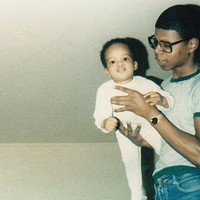Page 2 of 3
Saunders played and listened to both Run-DMC and Pink Floyd as a teenager, but he couldn't reconcile the two until he left the South. "When I got a taste of Greenwich Village, I felt like I was at home," he says. "There were weird people just like me -- artists, poets, musicians, painters, so many different cultures and ethnicities. I'd look around and see all the punk rockers and gothic cats, but at the same time they'd be hanging out with these hardcore hip-hop guys."
A variety of factors -- accelerated technology, social and economic changes -- have conspired to make things easier today for people to discover all kinds of music. "More and more of the world is being exposed to the same things now," says Bunton. "It's not so rare anymore for someone who grows up in a poor black neighborhood to hear all kinds of different music. And when you start hearing all kinds of music, you begin to realize that people are just people. Music is not so much about race, it's about exposure, it's about what you know and how you incorporate it into your life."
TV on the Radio may be the first experimental rock band that seamlessly and organically mixes musical styles for a mainstream audience. The band's roster certainly qualifies them for the job: Bunton is an ex-Afropunk from Kentucky; singer Tunde Adebimpe is a Nigerian-born artist raised in Pittsburgh; the band's only white member, guitarist and producer David Andrew Sitek, worked with indie-rock bands like the Yeah Yeah Yeahs before forming TV on the Radio in 2001. Perhaps Rolling Stone is right -- with Barack Obama as the first black president of a truly multi-cultural United States, TV on the Radio may just be the most American band making music today.
TV on the Radio will perform at Amos' Southend on June 11. Tickets are $25.
Ten black-made classics of experimental rock:
1) Love: Forever Changes (1967) -- One of the most beautiful and haunting psychedelic pop albums of the 1960s came from troubled genius and multi-instrumentalist Arthur Lee.
2) The Jimi Hendrix Experience: Electric Ladyland (1968) -- Hendrix's mind-bending third disc may be the most influential guitar-based psychedelic blues album of all time.
3) Parliament: Osmium (1970) -- Bunton calls Parliament's debut his "guidebook." On it, George Clinton and his band combine psychedelia, gospel, blues and even country into a swirling gumbo of experimental rock.
4) Funkadelic: Maggot Brain (1971) --Eddie Hazel's mesmerizing guitar solo on the title track of this classic album from Clinton's other band manages to simultaneously transport you into the stratosphere and have you weeping on a street corner in the ghetto.
5) Death: ...For the Whole World to See... (1974) -- Before the Buzzcocks, there was Death, a Stooges- and MC5-like hard rock outfit from Detroit that saw punk two years before most anybody else did. This EP was just reissued by Drag City Records in 2009, after gathering dust for more than three decades.
6) Bad Brains: Bad Brains (1982) -- This bratty D.C. punk band set the blueprint for hardcore with its blistering, whiplash anthem "Pay to Cum."
7) A.R. Kane: 69 (1988) -- Bad Brains' later mixes of punk, reggae and free jazz may have opened the doors for bands ranging from the Beastie Boys to Fishbone, but this 1988 debut from the British band A.R. Kane introduced new guitar textures that are still heard today in music ranging from Radiohead to TV on the Radio.
8) Tricky: Maxinquaye (1995) -- On his brilliant 1995 debut, electronic artist Tricky perfected the hazy sound of trip-hop and brought a gritty, rock-guitar edge to Public Enemy's "Black Steel in the Hour of Chaos" that no one could have predicted.
9) Cody Chesnutt: The Headphone Masterpiece (2002) -- With his sweeping, navel-gazing, double-disc homemade opus, Cody Chesnutt made it OK for young, guitar-loving black kids in garages across America to create experimental lo-fit indie rock without fear of reprisal from snobbish whites or suspicious blacks.
10) TV on the Radio: Dear Science (2008) -- On its third album -- fourth, if you consider their early homemade spoof of Radiohead, OK Calculator -- TV on the Radio perfects their mix of indie- and prog-rock, free jazz, funk and soul, creating something that actually approaches pop.
Ten contemporary indie-rock acts to keep an eye on:
1) Bloc Party -- British band in the art-punk mold of Joy Division and Wire.
2) Game Rebellion -- Metal band with brush strokes of hip-hop and experimental rock.
3) The Dirtbombs -- garage rock and R&B in the vein of the White Stripes.
4) Noisettes -- angular lo-fi art rock from the U.K., also in the mold of the White Stripes.

